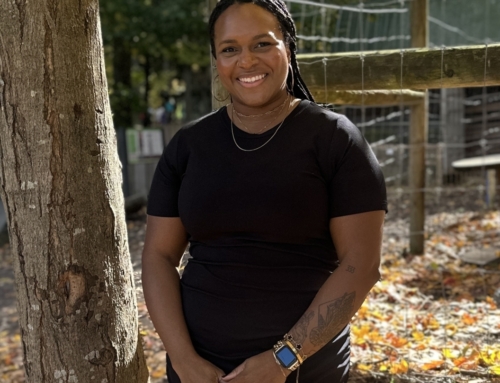Some of my most memorable memories this winter are of two cold, clear weekends in January spent working with my husband Roger and Joe, Common Ground’s site manager, putting up a new sugar shack here at Common Ground. It is a gorgeous little building made in Vermont from locally harvested trees. For the first time this spring we are boiling sap from our maple trees in luxury! So far we have bottled two cases of this amazing nectar and the sap has continued to flow freely this week. I am hoping for several more cases – and busily plotting how I might be able to sneak a bottle home for myself (the syrup is guarded like gold around here).
Producing maple syrup is serious work. It requires collecting sap from a dozen or so trees around the site almost every day. Fresh sap is stored in 50 gallon barrels in the new sugar shack until there is enough to justify firing up the distiller. We seem to have accumulated enough sap a couple of times a week this season. Once the distiller is fired up it is kept hot for 5-8 hours. This requires constant tending of the fire and careful attention to ensure the cooking sap does not boil dry: fresh sap must be added regularly to avoid burning the emerging syrup. While syrup is under production the sugar shack also hosts hundreds of children from the New Haven Public Schools who come here on field trips to learn about maple syruping. When fresh sap is sufficiently distilled it is further “finished” on a small propane stove set up nearby. When the sap leaves the sugar shack, it is about one tenth the volume of when it entered – that means that for each 50 gallon drum of sap we collect about 5 gallons leaves the sugar shack.
But wait – there is still more work to do! All of this partially finished syrup-sap (is that a technical term?) is stored in our walk-in refrigerator until we can give it a final boil and bottle it. This final finish requires lots of standing around our commercial stove watching large pots of sap-that-is-almost-syrup boil, playing with candy thermometers and dipping spoons into each batch to watch for the “sheeting” that indicates the syrup is ready to bottled. By the time the syrup is ready to bottle it has probably been reduced by another half. This makes for an excellent math problem…how many of gallons does each 50 gallons of sap yield? The answer can be found below!
I have already had the great pleasure of tasting the end product of Common Ground’s sugaring operation this year. For my taste, maple syrup – and in particular OUR maple syrup – is one of the best foods ever created. So while producing maple syrup is a lot of work, as far as I am concerned it is well worth it. Perhaps it is always that final product, that sweet essence we hope to achieve as a result of all our hard work that keeps us going.
Of course this line of discourse has made me think about how we work with our students in a similar vein – helping them to distill their thinking and focus and sharpen their intellects. It has also made me think about the strategic site planning process we completed last year that served to distill and focus the wants and needs of our organization into their most essential elements. Maybe this initial planning process is comparable to what happens to our sap in the sugar shack: the Master Site Plan that resulted from this process is like the “syrup-sap” waiting to be finished off in the kitchen. Now we are busy cooking up the implementation – raising funds that will allow us to complete the work we have planned. This cooking will ultimately produce more of that “sweet essence” that I associate with the work of Common Ground. For now, we are still working hard to get there – but we know that our efforts will yield beautiful and delicious results for the entire Common Ground community. THAT is what keeps us all hard at it, with joy and sweet anticipation.






Leave A Comment